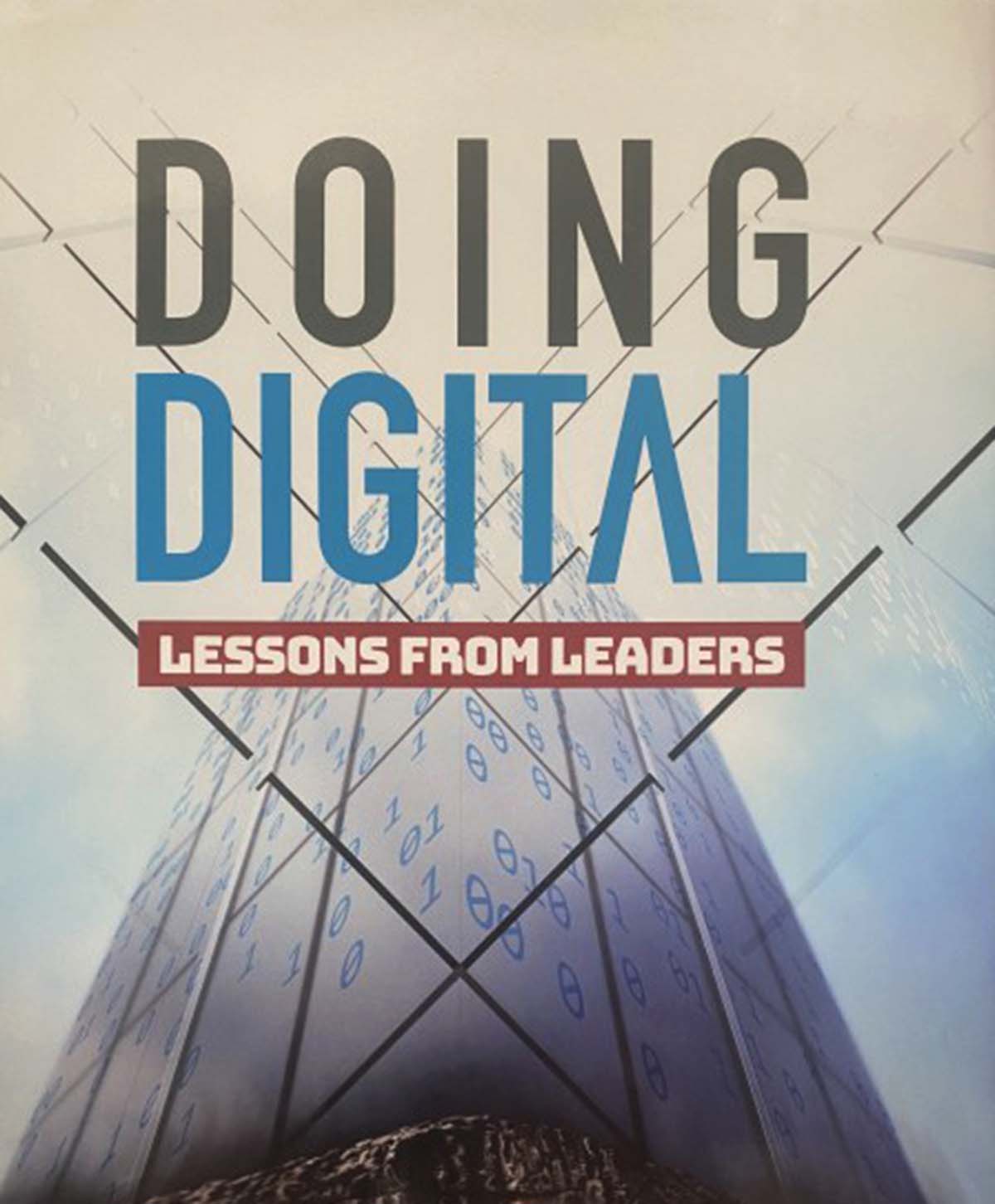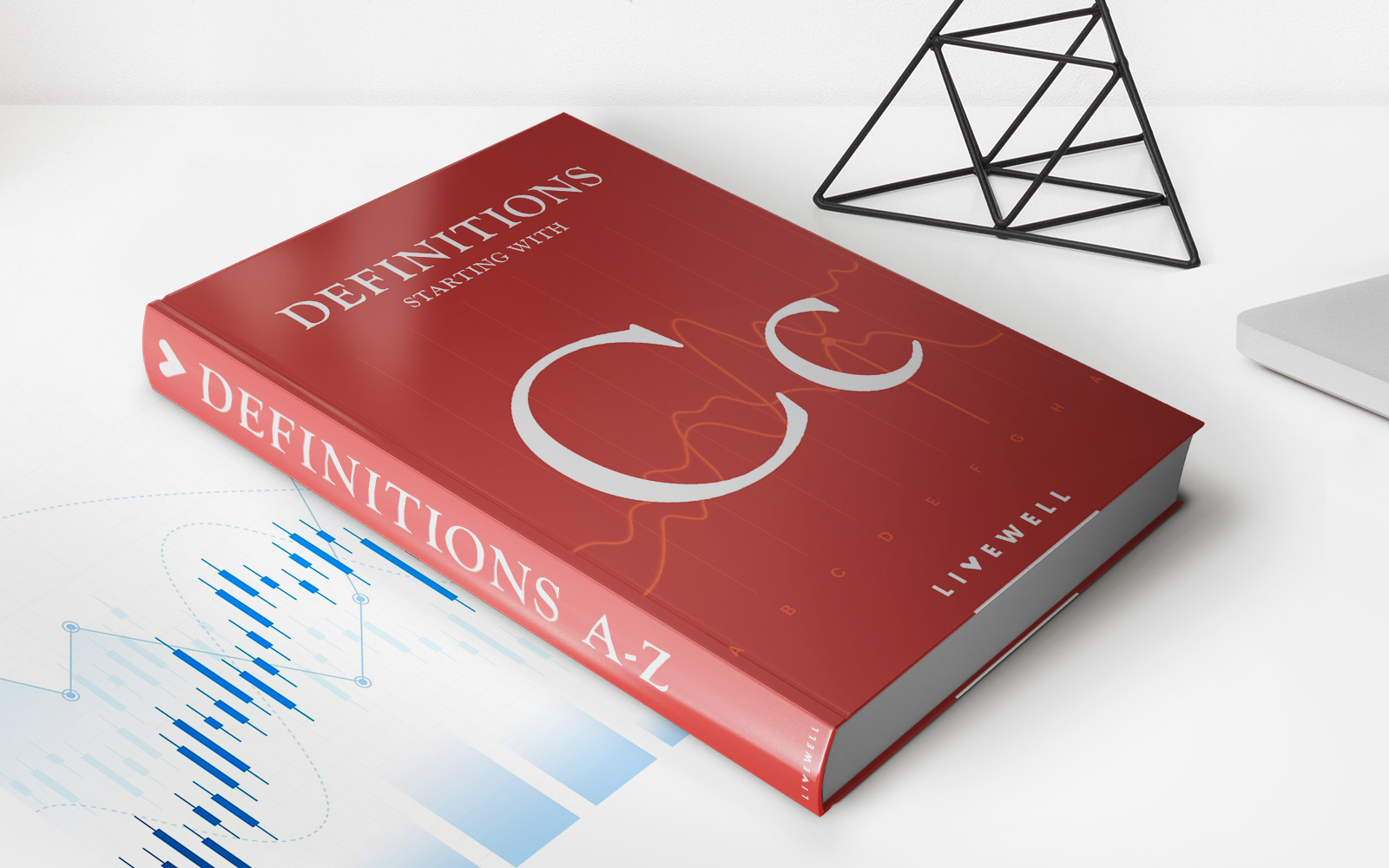Home>Finance>What Are Traditional And Nontraditional Types Of Credit?


Finance
What Are Traditional And Nontraditional Types Of Credit?
Published: January 7, 2024
Learn about different types of credit – traditional and nontraditional – and how they can impact your financial situation. Explore various options for managing your finances and building credit in the world of finance.
(Many of the links in this article redirect to a specific reviewed product. Your purchase of these products through affiliate links helps to generate commission for LiveWell, at no extra cost. Learn more)
Table of Contents
Introduction
When it comes to managing your finances, understanding the different types of credit available to you is crucial. Traditional and nontraditional types of credit play a significant role in our lives, allowing us to make purchases and achieve important financial goals.
In this article, we will explore traditional and nontraditional types of credit, highlighting the key features, benefits, and considerations for each. Whether you’re looking to apply for a loan, get a credit card, or explore alternative lending options, having a comprehensive understanding of these credit types will empower you to make informed financial decisions.
Traditional types of credit are the ones that most people are familiar with, such as credit cards, personal loans, mortgage loans, and auto loans. These credit options have been around for years, offering individuals the opportunity to borrow money and pay it back over time with interest.
On the other hand, nontraditional types of credit have emerged in recent years as alternatives to traditional lending options. These nontraditional credit options, like payday loans, peer-to-peer lending, and rent-to-own agreements, offer unique benefits and flexibility for individuals who may not qualify for or prefer not to use traditional credit.
Now, let’s dive into the details of each type of credit, discussing their features, advantages, and considerations, so you can make an informed choice that aligns with your financial needs and goals.
Traditional Types of Credit
Traditional types of credit are the tried-and-true options that have been available to consumers for many years. These include credit cards, personal loans, mortgage loans, and auto loans. Let’s take a closer look at each:
- Credit Cards: Credit cards are one of the most widely used forms of credit. They allow you to make purchases on credit and repay the balance in full or over time with interest. Credit cards offer convenience, flexibility, and the ability to earn rewards or cashback on purchases. However, it’s important to use them responsibly to avoid accumulating high-interest debt.
- Personal Loans: Personal loans are another common type of traditional credit. They are installment loans that can be used for various purposes, such as debt consolidation, home renovations, or unexpected expenses. Personal loans typically have fixed interest rates and repayment terms, making it easier to budget for and repay the borrowed amount.
- Mortgage Loans: For individuals looking to purchase a home, a mortgage loan is often necessary. These loans are secured by the property you’re buying and have long repayment terms, usually ranging from 15 to 30 years. Mortgage loans offer the opportunity to own a home without having to pay the full purchase price upfront, but it’s important to carefully consider the interest rates and associated costs.
- Auto Loans: When buying a car, many individuals rely on auto loans to finance the purchase. Auto loans provide the funds needed to purchase a vehicle, which are then repaid in monthly installments over a set period of time. Interest rates for auto loans can vary depending on factors such as creditworthiness, the type of car being purchased, and the loan term.
Traditional types of credit offer stability and often come with predictable terms and conditions. They are widely accepted, making them convenient for everyday expenses, major purchases, and financial emergencies. However, it’s essential to compare interest rates, fees, and repayment terms from different lenders to ensure you select the most favorable option that fits your financial situation.
Credit Cards
Credit cards are one of the most popular and widely used forms of credit. They allow individuals to make purchases on credit and repay the balance in full or over time with interest. Credit cards offer several benefits and conveniences, but it’s important to use them responsibly to avoid financial trouble.
Benefits of credit cards include:
- Convenience: Credit cards provide a convenient way to make purchases, whether online or in-person. They eliminate the need to carry cash and offer protection against fraudulent transactions.
- Rewards and Cashback: Many credit cards offer rewards programs where you can earn points, miles, or cashback on purchases. These rewards can be redeemed for travel, merchandise, or statement credits, providing additional value for cardholders.
- Building Credit History: Proper use of credit cards can help individuals build a positive credit history. Timely payments and responsible credit utilization demonstrate creditworthiness, making it easier to qualify for loans and secure better interest rates in the future.
However, it’s important to be aware of the potential pitfalls of credit cards:
- High-Interest Rates: Credit cards often come with high-interest rates, especially for those with less-than-perfect credit. Failure to pay off the balance in full each month can result in accumulating costly interest charges.
- Debt Accumulation: The ease of using credit cards can lead to overspending and accumulating debt. It’s crucial to budget and use credit cards responsibly to avoid falling into a cycle of debt.
- Fees and Penalties: Credit cards may come with annual fees, late payment fees, and penalties for exceeding the credit limit. It’s essential to read and understand the terms and conditions of the credit card agreement to avoid surprises.
When choosing a credit card, consider factors such as interest rates, annual fees, rewards programs, and additional perks. It’s also important to compare offers from different issuers to find the card that best suits your financial needs and spending habits.
Remember, responsible credit card use involves making timely payments, keeping credit utilization low, and avoiding unnecessary debt. By using credit cards wisely, you can enjoy the benefits they offer while maintaining financial stability.
Personal Loans
Personal loans are a versatile form of traditional credit that can be used for various purposes, such as consolidating debt, funding home improvements, or covering unexpected expenses. Unlike credit cards, personal loans are installment loans with a fixed repayment term and interest rate. Here are some key details to consider when it comes to personal loans:
Benefits of personal loans:
- Flexible Use: Personal loans offer flexibility in how you can use the funds. Whether you’re looking to consolidate debts into one manageable payment or finance a big purchase, personal loans can be tailored to your specific needs.
- Predictable Repayment: Personal loans come with fixed interest rates and set repayment terms. This allows you to budget and plan for your monthly payments, making it easier to stay on track and pay off the loan in a timely manner.
- Lower Interest Rates: Compared to other forms of credit, such as credit cards, personal loans often come with lower interest rates. If you have good credit, you may qualify for even more favorable rates, helping you save money in the long run.
Considerations for personal loans:
- Creditworthiness: Lenders will review your credit history and credit score to determine your eligibility for a personal loan. Having a good credit score can increase your chances of approval and help you secure more favorable terms.
- Repayment Term: Personal loans typically have loan terms ranging from one to seven years. It’s essential to choose a term that aligns with your financial goals and ability to make monthly payments.
- Secured vs. Unsecured: Personal loans can be secured or unsecured. Secured loans require collateral, such as a vehicle or savings account, which the lender can seize if you default on the loan. Unsecured loans, on the other hand, do not require collateral but may have higher interest rates.
When applying for a personal loan, it’s important to compare offers from different lenders. Consider factors such as interest rates, fees, and repayment terms. Additionally, be mindful of borrowing only what you need and ensure that the monthly payments fit comfortably within your budget.
Personal loans can be a practical way to finance major expenses or consolidate high-interest debt. However, responsible borrowing and diligent repayment are crucial to avoid falling into further debt and damaging your credit history. By using personal loans wisely, you can achieve your financial goals and improve your overall financial health.
Mortgage Loans
When it comes to purchasing a home, most people rely on mortgage loans. A mortgage loan is a type of traditional credit specifically designed for buying real estate. It offers individuals the opportunity to become homeowners without having to pay the full purchase price upfront. Here are some key points to consider about mortgage loans:
Types of Mortgage Loans:
- Fixed-Rate Mortgages: With a fixed-rate mortgage, the interest rate remains the same throughout the loan term. This provides predictability and stability in monthly payments, allowing homeowners to budget more effectively.
- Adjustable-Rate Mortgages (ARM): With an adjustable-rate mortgage, the interest rate is initially set for a fixed period, typically 5, 7, or 10 years, and then adjusts annually based on market conditions. ARMs often offer lower interest rates in the initial period, but they can increase or decrease over time, potentially impacting monthly payments.
- Government-Backed Mortgages: Government-backed mortgages, such as FHA loans or VA loans, are insured by federal agencies and often have more flexible credit requirements. These loans are designed to help specific groups of individuals, such as first-time homebuyers or veterans, achieve homeownership.
Considerations for Mortgage Loans:
- Down Payment: Mortgage loans typically require a down payment, which is a percentage of the home’s purchase price paid upfront. The amount of the down payment can vary depending on the type of loan and the lender’s requirements. It’s important to save and plan for a down payment to secure a mortgage loan.
- Interest Rates and Terms: Mortgage loans come with different interest rates and loan terms. It’s crucial to compare rates and terms from different lenders to find the most favorable option. A small difference in interest rates can have a significant impact on the total cost of the loan over the long term.
- Closing Costs: When closing on a mortgage loan, there are additional costs involved, such as appraisal fees, title insurance, and loan origination fees. These closing costs can add up, so it’s important to budget for them when planning to purchase a home.
- Affordability: Before applying for a mortgage loan, it’s essential to consider your financial situation, including your income, expenses, and debt. Lenders typically use a debt-to-income ratio to determine your ability to repay the loan. It’s important to ensure that the monthly mortgage payment fits comfortably within your budget.
Securing a mortgage loan is a significant financial commitment. It’s vital to gather all the necessary information, work with reputable lenders, and carefully consider the terms and conditions before making a decision. By approaching mortgage loans with knowledge and caution, you can make a confident choice and dive into homeownership with peace of mind.
Auto Loans
Auto loans are a popular form of traditional credit that allows individuals to finance the purchase of a vehicle. Whether you’re buying a new car or a used one, an auto loan can help make the purchase more affordable. Here’s what you need to know:
Types of Auto Loans:
- New Car Loans: If you’re buying a brand-new car, you can opt for a new car loan. These loans often come with lower interest rates and longer repayment terms, making it more manageable to finance a higher-priced vehicle.
- Used Car Loans: When buying a used car, a used car loan is a common option. The interest rates and terms may vary depending on the age, mileage, and condition of the vehicle. Used car loans typically have shorter repayment terms compared to new car loans.
- Pre-Approved Loans: It’s also possible to get pre-approved for an auto loan before shopping for a car. Pre-approval provides you with a set loan amount and interest rate, allowing you to negotiate with confidence when visiting car dealerships.
Considerations for Auto Loans:
- Interest Rates: The interest rate on an auto loan can vary based on factors such as your credit score, the loan term, and the type of vehicle being financed. Shop around and compare rates from different lenders to ensure you obtain the most competitive offer.
- Loan Terms: Auto loans typically have loan terms ranging from two to seven years. A shorter loan term may result in higher monthly payments but lower overall interest costs. Consider your budget and the total cost of the loan to determine the appropriate loan term for you.
- Down Payment: While it’s possible to secure an auto loan with little or no down payment, making a larger down payment can help reduce the loan amount and decrease the overall interest paid. Evaluate your financial situation and consider saving for a down payment if feasible.
- Vehicle Depreciation: Vehicles depreciate over time, meaning their value decreases. It’s essential to be aware that your car may be worth less than the remaining loan balance at some point. Understanding the impacts of depreciation can help you make informed decisions about your auto loan.
Before committing to an auto loan, carefully evaluate your affordability and compare loan offers from different lenders. Keep in mind the total cost of the loan, including interest charges and fees, as well as your monthly budget. By doing your research and understanding the terms and conditions, you can secure an auto loan that fits your needs and allows you to enjoy your new set of wheels.
Nontraditional Types of Credit
In addition to the traditional types of credit, there are also nontraditional types of credit that have emerged in recent years. These alternative lending options offer unique features and flexibility for individuals who may not qualify for or prefer not to use traditional credit. Let’s explore some of these nontraditional types of credit:
- Payday Loans: Payday loans are short-term loans typically taken out to cover emergency expenses between paychecks. These loans are usually for small amounts and require repayment in full with interest on the borrower’s next payday. Payday loans are known for their high-interest rates and fees, so they should be used with caution and only in situations where there are no other alternatives.
- Peer-to-Peer Lending: Peer-to-peer lending, also known as P2P lending, allows individuals to borrow money directly from other individuals or investors through online platforms. P2P lending bypasses traditional financial institutions, offering borrowers potentially more favorable terms and investors the opportunity to earn interest on their investments. It’s important to carefully review and understand the terms and risks associated with P2P lending before participating.
- Rent-to-Own Agreements: Rent-to-own agreements enable individuals to acquire goods, such as appliances or furniture, by making monthly rental payments with the option to purchase the item at the end of the agreement. While rent-to-own arrangements provide immediate access to items without the need for upfront payment or credit checks, they often come with high interest rates and additional fees, making the overall cost significantly higher compared to buying the item outright.
Nontraditional types of credit offer alternative options for those who have limited access to traditional credit or prefer a different approach. However, it’s crucial to carefully consider the terms, costs, and risks associated with these credit options before committing to them.
When exploring nontraditional types of credit, it’s critical to research and compare different lenders or platforms, read reviews, and understand the terms and conditions thoroughly. Carefully evaluate the interest rates, fees, repayment terms, and consequences of nonpayment to make an informed decision that aligns with your financial goals and circumstances.
It’s important to note that while nontraditional types of credit can provide access to funds quickly or offer unique benefits, they may also come with higher costs and potential risks. Therefore, it’s advisable to only utilize these credit options when necessary and explore alternatives such as building credit history or improving creditworthiness to gain access to more traditional and potentially lower-cost credit options in the future.
Payday Loans
Payday loans are a type of nontraditional credit that is designed to help individuals cover emergency expenses between paychecks. These short-term loans provide quick access to cash, but they come with high-interest rates and fees that borrowers need to consider carefully. Here’s what you need to know about payday loans:
Features of Payday Loans:
- Fast Access to Funds: Payday loans are known for their quick approval process, often providing funds to borrowers within hours or even minutes of applying. This makes them an attractive option for those facing urgent financial needs.
- Short Loan Terms: Payday loans typically have a repayment term of two weeks to one month. The loan is intended to be repaid in full, including the principal amount and fees, on the borrower’s next payday.
- High-Interest Rates and Fees: Payday loans come with considerably high-interest rates and fees compared to traditional loans. The annual percentage rate (APR) on payday loans can exceed 400% in some cases. It’s essential to understand the total cost of the loan before taking out a payday loan.
- No Credit Check: Most payday lenders do not perform a thorough credit check during the application process. This makes payday loans more accessible for individuals with poor or limited credit history. However, it’s important to note that some lenders may still consider credit information and report loan repayment activity to credit bureaus.
Considerations for Payday Loans:
- Costs and Repayment: It’s crucial to assess the total cost of the loan, including fees and interest charges, before taking out a payday loan. Make sure you can repay the loan in full on the due date to avoid additional fees and potential financial difficulties.
- Alternatives and Debt Cycle: Payday loans should be used as a last resort due to their high costs. Consider exploring alternatives, such as borrowing from family or friends, negotiating with creditors, or seeking financial assistance from nonprofit organizations, before resorting to payday loans. If you find yourself relying on payday loans to cover ongoing expenses, you may fall into a cycle of debt that can be difficult to break.
- Regulation and Lender Reputation: Payday loans are regulated differently in various regions. It’s important to research and choose a reputable lender who follows ethical lending practices and provides transparent terms and conditions.
While payday loans may provide immediate relief during financial emergencies, it’s crucial to weigh the costs and risks associated with these loans. If possible, explore other options for accessing funds and consider building an emergency savings fund to avoid relying on payday loans in the future. By making informed financial decisions and seeking out alternatives, you can steer clear of the potentially harmful cycle of payday loan dependency.
Peer-to-Peer Lending
Peer-to-peer lending, also known as P2P lending, has gained popularity as a nontraditional form of credit in recent years. It connects individuals looking to borrow money directly with individual lenders or investors through online platforms. Here’s what you need to know about peer-to-peer lending:
How Peer-to-Peer Lending Works:
In a peer-to-peer lending arrangement, borrowers create a loan listing on a P2P lending platform, indicating the amount they need, the purpose of the loan, and other relevant details. Interested lenders then review these listings and choose which loans they want to fund. Once the loan is funded, the borrower receives the funds and repays the loan as agreed upon with the lender.
Benefits of Peer-to-Peer Lending:
- Flexible Borrowing: Peer-to-peer lending offers borrowers flexibility in terms of loan amounts, interest rates, and repayment terms. This allows borrowers to tailor the loan to their unique financial needs.
- Competitive Interest Rates: P2P lending platforms often have lower interest rates compared to traditional lenders, especially for borrowers with good credit scores. This can make peer-to-peer lending an attractive option for those looking to secure a loan at a more favorable rate.
- Investment Opportunities: P2P lending also provides an alternative investment opportunity for lenders or investors. By participating in peer-to-peer lending, individuals can diversify their investment portfolios and potentially earn higher returns compared to traditional investment options.
Considerations for Peer-to-Peer Lending:
- Risk Assessment: As a borrower, it is essential to understand that lenders on peer-to-peer platforms assess the risk associated with your loan application. Factors such as your credit history, income, and loan purpose will play a role in determining your loan’s interest rate and approval.
- Fees: Peer-to-peer lending platforms may charge various fees, such as origination fees or servicing fees. It’s important to carefully review the fees associated with the loan to understand the true cost and impact on your repayment.
- Investor Risk: On the investor side, lenders should be aware that peer-to-peer lending carries its own risks. Borrowers may default on loans or face financial difficulties, resulting in potential losses for lenders. Diversifying investments across multiple loans can help mitigate this risk.
- Platform Selection: There are several peer-to-peer lending platforms available, each with its own set of terms, fees, and requirements. It’s important to research and compare different platforms to find one that suits your borrowing or investing needs.
Before engaging in peer-to-peer lending, it’s crucial to carefully evaluate the platform’s reputation, review borrower or lender feedback, and understand the terms and conditions of the lending agreement. By doing your due diligence and assessing the risks and benefits, you can make an informed decision about participating in peer-to-peer lending and potentially access more favorable loan terms or investment opportunities.
Rent-to-Own Agreements
Rent-to-own agreements offer a nontraditional credit option for individuals looking to acquire goods, such as appliances, furniture, or electronics, without making an upfront payment or obtaining traditional credit. These agreements allow renters to make monthly rental payments with the option to purchase the item at a later date. Here’s what you need to know about rent-to-own agreements:
How Rent-to-Own Agreements Work:
In a rent-to-own agreement, the individual renting the item, known as the tenant or renter, makes regular payments to the owner or retailer, known as the lessor. These payments typically consist of rental fees and may include additional charges for services or maintenance. The agreement stipulates the duration of the rental period and includes an option for the tenant to purchase the item at the end of the agreement.
Benefits of Rent-to-Own Agreements:
- No Need for Credit Check: Rent-to-own agreements often do not require a traditional credit check, making them accessible to individuals with limited or poor credit history.
- Immediate Access to Goods: Rent-to-own agreements provide immediate access to goods without requiring a significant upfront payment or credit approval process. This can be helpful for individuals who need essential items but cannot afford to purchase them outright.
- Flexibility: Rent-to-own agreements offer flexibility in terms of the length of the rental period and the option to buy the item at the end of the agreement. This allows renters to test the item and decide if they want to commit to owning it or return it without further obligations.
Considerations for Rent-to-Own Agreements:
- Higher Overall Cost: Rent-to-own agreements often come with high-interest rates or fees, resulting in a higher overall cost compared to purchasing the item outright. It’s important to consider the total cost of ownership before entering into a rent-to-own agreement.
- Ownership Terms and Conditions: It’s crucial to carefully review the terms and conditions of the rent-to-own agreement, including the purchase price, payment schedules, late fees, and maintenance responsibilities. Understand the terms before committing to the agreement to avoid surprises or financial strain.
- Item Quality and Value: Assess the quality and value of the item being rented before entering into a rent-to-own agreement. Ensure that the item is worth the total cost you will pay over the rental period and that it meets your needs and preferences.
Before entering into a rent-to-own agreement, carefully evaluate your financial situation and consider other purchasing options. If possible, compare the cost of owning the item through rent-to-own versus purchasing it outright or utilizing other credit options. It’s essential to weigh the value, convenience, and overall costs to make an informed decision about rent-to-own agreements.
Remember, rent-to-own agreements should be considered carefully and used responsibly, keeping in mind the potential higher costs and the importance of reviewing and understanding the terms and conditions of the agreement before committing to it.
Conclusion
Understanding the different types of credit available to you is essential for effective financial management. Traditional types of credit, such as credit cards, personal loans, mortgage loans, and auto loans, have long been relied upon to meet various needs. These options provide stability, flexibility, and often lower interest rates when used responsibly.
However, nontraditional types of credit, like payday loans, peer-to-peer lending, and rent-to-own agreements, have gained popularity as alternatives for borrowers who may not qualify for traditional credit or prefer a different approach. These options offer unique benefits but come with higher costs, risks, and considerations that should be carefully evaluated before engaging in such credit arrangements.
When choosing the right type of credit, focus on factors such as interest rates, fees, repayment terms, affordability, and your long-term financial goals. Research different lenders, platforms, and credit options to find the most favorable terms that align with your needs and financial capabilities.
It’s crucial to use credit responsibly, regardless of the type you choose. Maintain a strong credit history by making timely payments, using credit wisely, and staying within your budget. Avoid excessive debt and regularly review your credit standing to identify areas for improvement.
By understanding the nuances of traditional and nontraditional types of credit, you can navigate the financial landscape more confidently and make informed choices that promote your financial well-being. Remember that credit should be a tool to support your goals rather than a burden to carry, so use it wisely and prudently.














